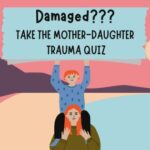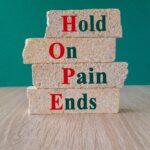Opioid harm reduction is a controversial subject. While more people are dying from opioid overdoses every year, there is still no clear path to addressing it. Over 100,000 people died from opioid overdoses in 2021. That’s a sharp increase from years past. Most people know that the opioid epidemic has been sweeping Illinois and the entire nation for years. They may not know, however, just how bad things have gotten since the beginning of 2020. Homicide rates possibly get even more attention than illegal opioid use, but here’s an alarming statistic to put it into perspective: in 2021, Cook County reported a number of homicides that hadn’t been seen in decades; opioid overdoses killed twice as many individuals as died by homicide, in the same amount of time.
The Debate On Overdose Prevention Sites
According to the American Medical Association, the best answer is to decriminalize the consumption of illegal opioids, in tandem with providing overdose prevention sites where people can be supervised while they’re using drugs. Unfortunately, instituting these sites is a risky move politically; it might be seen by voters as enabling drug users. Health officials in Cook County support these sites, and while the Chicago itself hasn’t taken concrete steps to bring them to the city, they’re keeping tabs on how the process goes in New York City’s two safe injection sites.
Why Overdose Prevention Centers Are Needed For Opioid Harm Reduction
Cities like Chicago already fund efforts that provide clean needles, fentanyl test strips, and Naxolone to at-risk communities – is this really so different? Even so, openly supporting prevention centers is not taken well by most people, and if a politician is hoping to get re-elected, that’s sometimes enough to give them cold feet on the issue.
The focus usually stays on opioid overdoses, for obvious reasons, but that isn’t the only public health threat that this kind of opioid harm reduction can address. Transmission rates for infectious diseases such as HIV and hepatitis C are always reduced when clean needles are provided. Stigma plays a role.
Synthetic opioids (fentanyl in particular) were the leading cause of fatal drug overdoses in Illinois. It was tied to 84% of opioid fatalities and 70% of all drug fatalities in 2020. Opioids have hit both rural and urban areas hard. No group, whether they’re white or Black, city dweller or farmer, poor or wealthy, has been immune. Some counties are seeing fentanyl playing a larger role in overdose deaths, while heroin numbers are going down. More drug busts are yielding fentanyl, too, sometimes hundreds of pounds of the synthetic opioid, or tens of thousands of counterfeit fentanyl pills.
Lincoln Recovery
Illegal opioid use has been a problem for quite some time, but the recent sharp increase in overdose deaths has experts, government officials, and law enforcement scrambling to fight the issue. The current strategy includes the distribution of fentanyl test strips as well as naxolone, a drug that can be used to prevent death when someone overdoses on opioids. The city of Chicago spends millions each year on these programs, but they clearly aren’t enough.
The Pandemic And Fentanyl
The uptick in opioid-overdose fatalities started at roughly the same time as the arrival of COVID-19 in the United States, and that’s no coincidence; there are actually a few reasons why this happened.
First of all, the border shutdowns affected supply lines, and not just for legal goods; they also disrupted the flow of heroin, cocaine, and other illicit opioids. Guess what this didn’t disrupt as much, though? The supply of fentanyl. This drug, which is up to 10 times stronger than heroin, found its way into street drugs in quantities never seen before.
Second, since users often had no idea they were even taking fentanyl, this resulted in a lot of overdoses that probably wouldn’t have happened with milder opioids. A quantity of fentanyl as small as a grain of sand is enough to kill someone, and it was being added to fake prescription pills, cocaine, and more.
Third, the sudden loss of support groups left many drug users without anywhere to turn for help. Community centers, counselors, and even fellow drug users who could administer naxolone in a pinch were suddenly gone. People who had some kind of motivation to slow or stop their drug use suddenly lost their reasons to try, and started using – often even more than before.
Meanwhile, drug users have been using a similar system (although much less sanitary) for years. Many people will wait to use drugs until they know someone else will be around to potentially administer Naxolone, just in case something goes wrong and they start overdosing. After all, Naxolone won’t do any good if there’s nobody around who can administer it.
Safe injection sites provide a solution. The two sites in New York City have already prevented 76 overdose deaths with the timely administration of Naxolone; that’s every person who’s overdosed at these centers during their two months of operation. Plus, the people running these sites are noticing that some people return not to use drugs, but simply to have a chat. Having a social space to call their own has a positive impact, and for some people it’s even leading to a decreased desire for drug use.
Resources To Learn More And Get Involved
Whether you’re ready to join the campaign against the opioid epidemic, or you just want to learn more, staying aware of the issue is key. Below you’ll find some organizations and information to get you started; you can stick with learning about it, or see if you can plug into efforts within your own community.
- Fentanyl a Large Driver of Opioid Deaths in Illinois
- JP Opioid Interaction Awareness Alliance
- Be Aware, Be Prepared
- StopOverdose.org
If you love ROR content:
Check out 100 Tips For Growing Up
Follow us on Instagram
Like us on Facebook





















